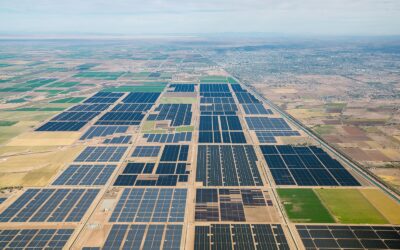After two years of steady post-pandemic growth, Greater Palm Springs experienced a slight reversal in population gains in 2024, even as Riverside County and the state of California continued their upward trajectories.
According to recently released data from the California Department of Finance’s Demographic Research Unit, the combined permanent resident count for the region stood at 419,157 as of January 1, 2025. This marked a modest decline of 677 residents, or 0.16 percent, from the previous year, interrupting the positive momentum that had built up since the pandemic-driven downturn between 2020 and 2022.
The regional pause was reflected broadly across the nine cities and unincorporated areas within the Greater Palm Springs region. Notably, Cathedral City saw its population drop by 344, while La Quinta lost 352 residents. Indio, the largest city in the valley, experienced a slight decline of 154 residents. However, some cities experienced increases: Coachella continued its growth, adding 334 residents, a 0.8 percent increase driven largely by ongoing residential development. Desert Hot Springs also managed a small but notable gain of seven residents, extending its streak of continuous growth to fifteen years.
Unincorporated areas within Greater Palm Springs, such as Bermuda Dunes, Thousand Palms, and Desert Edge, grew by a modest 201 residents, helping offset larger losses in neighboring cities.

Despite the one-year dip, the long-term perspective remains impressive. Over the last two decades, Greater Palm Springs has expanded by nearly 26 percent, significantly outpacing statewide and national averages, highlighting the area’s sustained appeal as both a retirement destination and an increasingly diverse regional economy.
In contrast, Riverside County as a whole maintained steady population growth, reaching nearly 2.5 million residents in 2025, an increase of 4,603 people or 0.19 percent from the previous year. The county’s broader attraction continues to be fueled by its relative housing affordability compared to coastal areas, coupled with available space for expansion and increasing job opportunities in logistics, healthcare and tourism.
At the state level, California recorded its second consecutive annual population increase, reaching 39.53 million residents, a gain of 108,438 people or 0.27 percent year-over-year. Factors contributing to the state’s upward trend include a resurgence in legal immigration, natural population growth (the net gain between births and deaths), and a steady influx of retirees drawn by California’s climate and amenities.

Several factors contributed to Greater Palm Springs’ temporary demographic stall:
Housing affordability emerged as a significant barrier, especially as mortgage rates hovered near 7 percent throughout late 2024, discouraging both new homebuyers and second-home purchasers who had driven earlier growth.
Demographically, the region faces a unique challenge, with a median age approximately six years higher than California’s average, leading to fewer births relative to deaths. Additionally, the labor market, especially within hospitality and tourism, began to stabilize after a period of robust post-pandemic hiring, reducing the pull of job-related relocation.
Looking ahead to 2026, several developments could potentially reignite population growth. The planned expansion of Palm Springs International Airport promises an additional 500,000 seats annually, creating new opportunities to attract young professionals and remote workers. Housing developments slated for Indio, Coachella, and northern Cathedral City could also restore momentum if mortgage rates stabilize.
Furthermore, demographic shifts driven by the retirement of Baby Boomers could result in increased home turnover and heightened demand for senior-oriented services, reshaping the region’s economic and social fabric.
The slight population dip of 2025 may ultimately serve as a brief pause rather than a long-term trend reversal. The region’s ability to navigate housing affordability, demographic challenges, and workforce dynamics will be crucial. Greater Palm Springs remains poised for potential renewed growth, contingent upon successfully balancing the needs of younger households and retirees alike.




